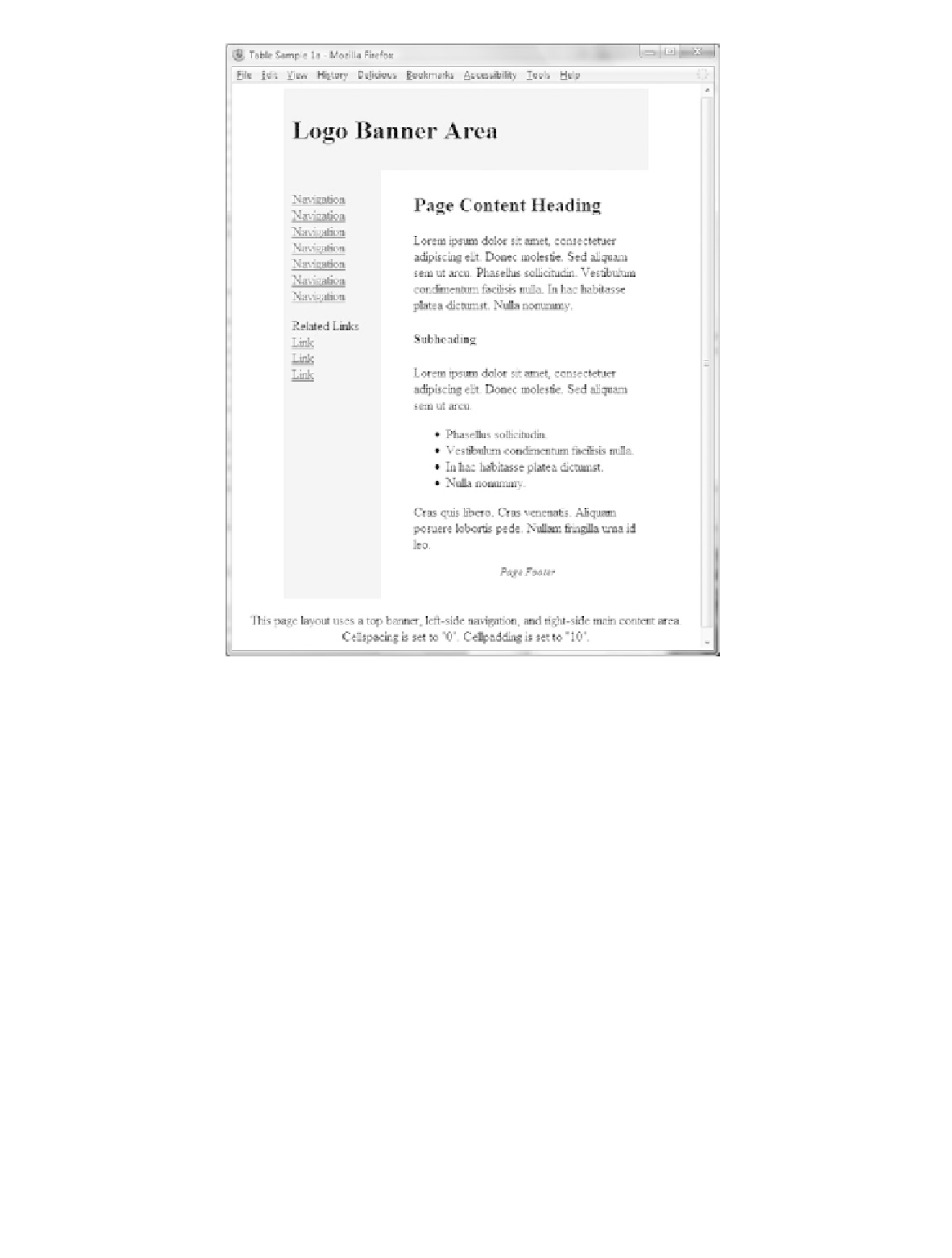HTML and CSS Reference
In-Depth Information
Figure 8.21
This table is
centered and uses
cellspacing
set
to
0
Review the table layout sketch shown in Figure 8.19. A screen reader would access the
table row by row, from top to bottom. The order of the areas “read” would be: banner,
navigation, spacer, and content. This would occur on each page configured in this manner.
One major disadvantage of the layout shown in Figure 8.19 is that the navigation links
would be “read” over and over as each page on the Web site is rendered. Refer to the
Linking to Fragment Identifiers section in Chapter 7 for a coding technique that allows
visitors to skip the repetitive navigation.
As you explore other table layout designs in this chapter and create your own, keep in
mind the way a screen reader would access the content. You may want to download a
free screen reader and listen yourself! Try free trial versions of JAWS (
http://www.
freedomscientific.com/fs_downloads/jaws.asp)
and Window-Eyes (
http://www.gwmicro.
There are a variety of commonly used designs for page layout tables. This section contains
examples of three commonly used page layouts to get you started using this technique.
The layout shown in Figure 8.22 shows banner, horizontal navigation, and two content
columns. The narrower content column on the right (called a sidebar) is commonly
used for advertisements or to showcase products and services offered. A page using this

Search WWH ::

Custom Search